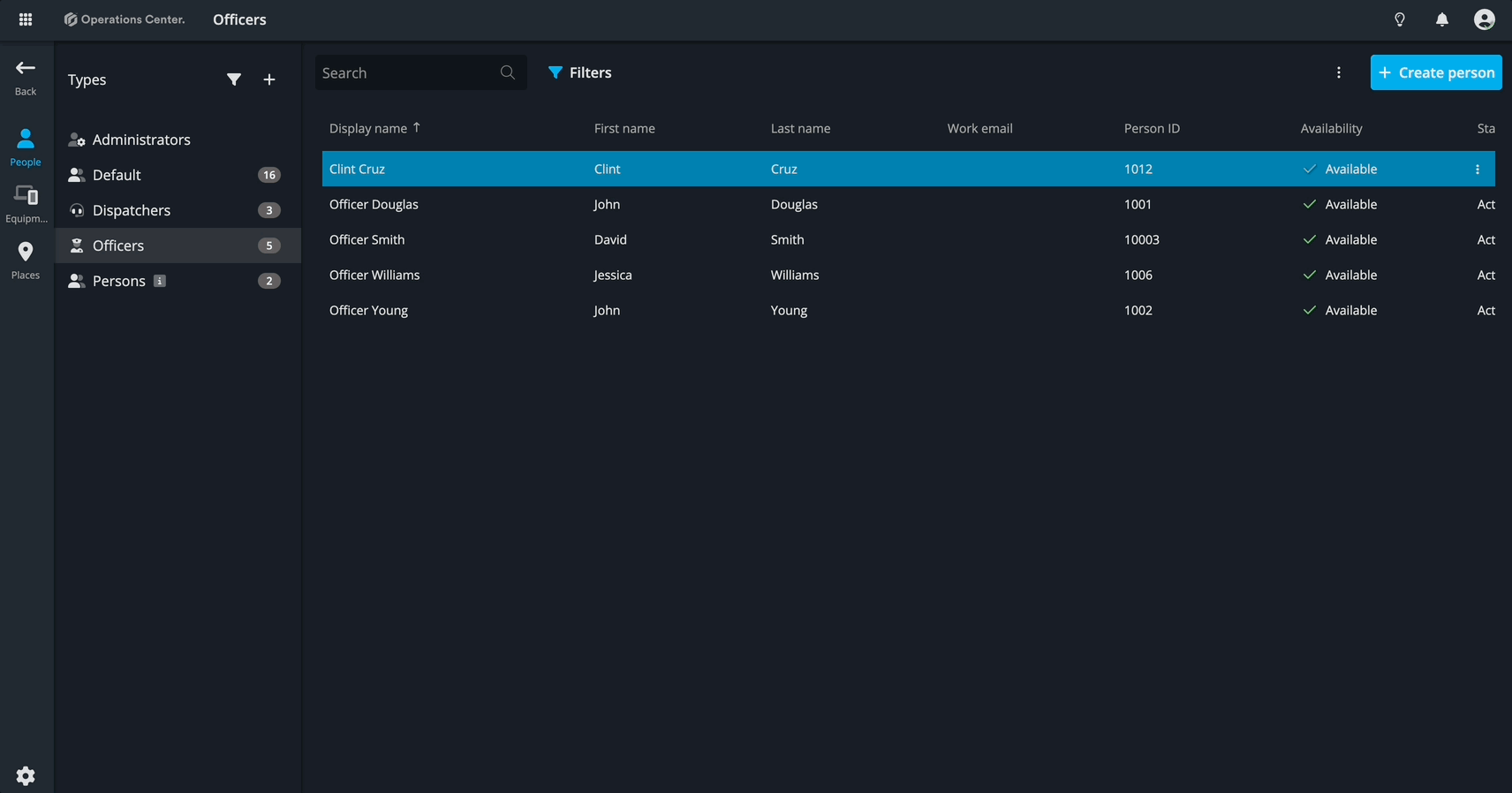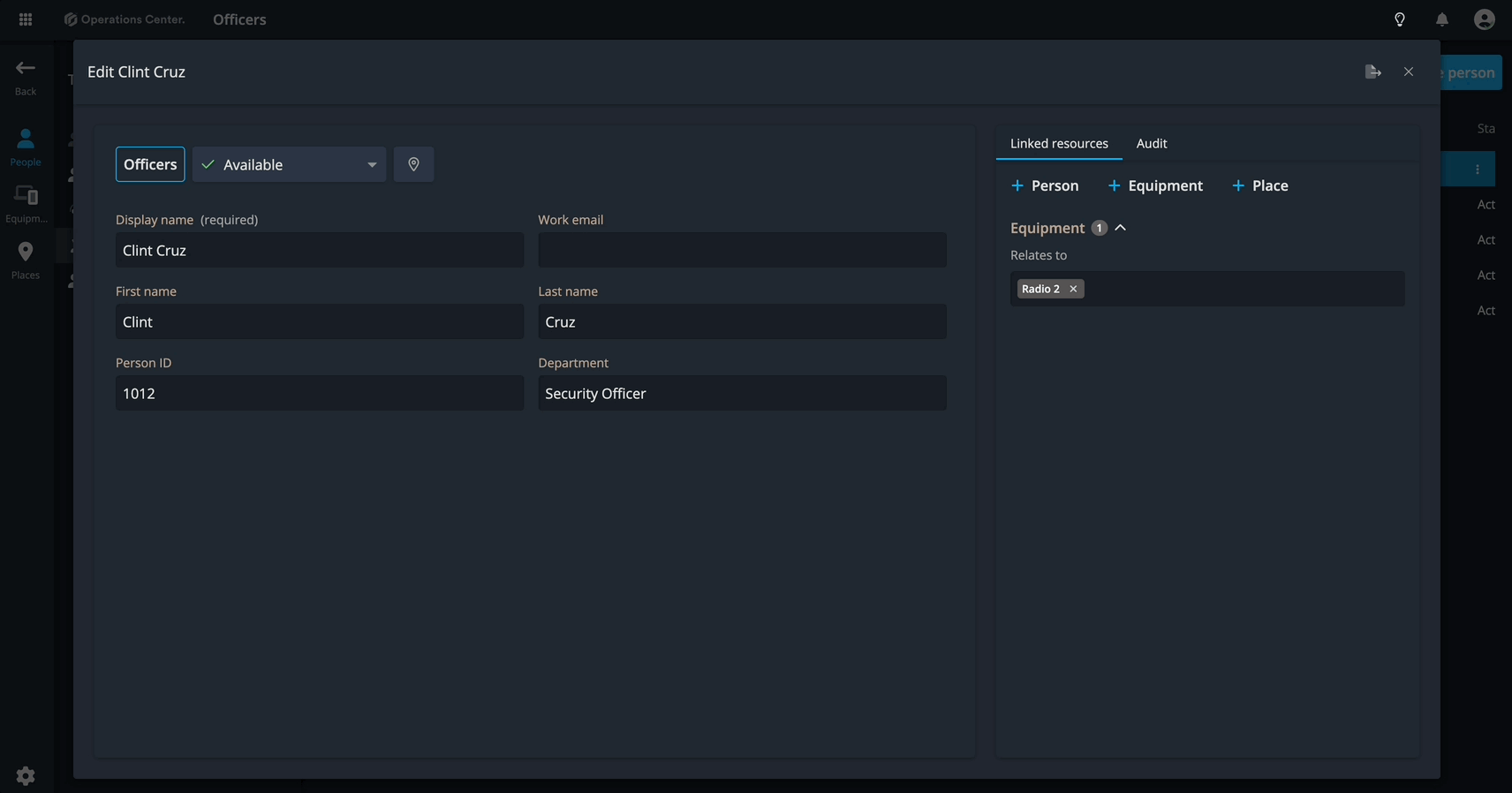Resource Linking: Connecting the Dots in Your Operations
Resource linking transforms operations from a scattered set of assets into a connected, intelligent system. It’s a smarter way to track dependencies — clearly showing who is using what, where everything is located, and how resources interact.
Imagine being able to instantly answer:
- Which equipment is assigned to which officer?
- Who to contact at a specific site when an alarm goes off?
- Where each piece of equipment is installed, assigned, or stored?
With resource linking, you gain complete visibility into your operational landscape — allowing every piece to fall into place effortlessly.
Creating a link between resources
To create a link between two resources, open the resource details view. You’ll find a section for Linked resources. From there:
- Click Add link.
- Choose a predefined relation type. Each resource category will offer a set of predefined relationship types tailored for that category.
- Select the resource you want to link.
- Finalize by clicking "Add link".
💡Only one link of a given type can exist between two resource entities. If a link already exists, it must be removed before creating a new one of the type.
Reverse linking
Every time you link one resource to another — for example, linking Officer A to Equipment B — the system automatically creates a reverse link. That means:
- Officer A will show a link to Equipment B, and
- Equipment B will also display a link back to Officer A.
This bidirectional linking ensures that no matter which resource you're viewing, you always see the full context. It improves navigation, clarity, and operational awareness, helping teams stay aligned and informed.
Types of relationships available for resources
People
People → People
| Relationship | Reverse Relationship |
|---|---|
| Reports to | Has report |
| Works with | Works with |
People → Equipment
| Relationship | Reverse Relationship |
|---|---|
| Has assigned | Is assigned to |
People → Places
| Relationship | Reverse Relationship |
|---|---|
| Works in | Has working in |
| Is assigned to | Has assigned |
Equipment
Equipment → Equipment
| Relationship | Reverse Relationship |
|---|---|
| Contained in | Contains |
| Used by | Is using |
| Connected | Connected |
| Replaced by | Replaces |
Equipment → Place
| Relationship | Reverse Relationship |
|---|---|
| Located in | Is location of |
Places
Place → Place
| Relationship | Reverse Relationship |
|---|---|
| Is in | Has |


